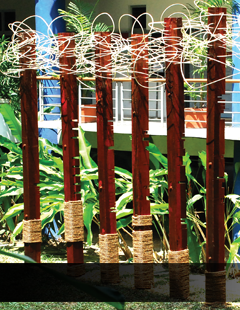
Johor Bahru: A Quality of Life City |
| Mohd Johari Mohd Yusof |
The city of Johor Bahru is Malaysia’s Southern Gateway, which was founded in 1855 by Temenggung Daeng Ibrahim, the father of Sultan Abu Bakar. The city was originally named Tanjung Puteri and it started out as a small Malay fishing village. In 1994, Johor Bahru was given a city status and since then this city has rapidly grown and becoming Malaysia’s second largest city with a population of over 1 million. Aspiring towards the highest possible quality of life, Johor Bahru through Iskandar Malaysia Development Region has planned to protect and to preserve their natural resources and urban green spaces. Hence, the urban landscape planning studio project for year 2013 addresses these issues by proposing six design concepts and ideas in continuing protecting the city’s fragile ecological environments. All these six proposals comprise three different significant zones of Johor Bahru city center, Stulang Laut and Danga Bay area. Three project are presented here. Various concept ideas were derived from these six projects. These appealing, interesting and unique ideas suggested that urban development should aim to be more self-sufficient in its use of resources rather than depleting resources drawn from areas outside the city. Furthermore, the proposed concept ideas also suggested that urban landscape should be developed in a manner that takes into account the physical character of the original natural environment on which the city is built. In this context, the designers argued that green infrastructure in Johor Bahru city should not be seen as merely the ‘left-over’ spaces that have not yet been developed within an urban area, but as spaces functioning as parts of a city’s life-support system. They benefit the urban dwellers by providing them with better surroundings in which to live and work hence enjoying a better quality of life. In this project, the designers explore an effective and comprehensive system for planning the protection and development of urban green infrastructure, now seen as essential to ensure the preceding environmental and social benefits can be maintained as urban growth continues. Through their ideas, the designers hope to make cities more attractive and healthy places to live, work and visit. In overall, the studio exercise and project have brought some creative and appealing ideas in protecting urban ecologies and its natural resources for future sustainability. This exercise also portrays unique design solutions for protecting these urban green spaces and at the same time do not compromise the needs of the future generations towards these valuable spaces.
|



